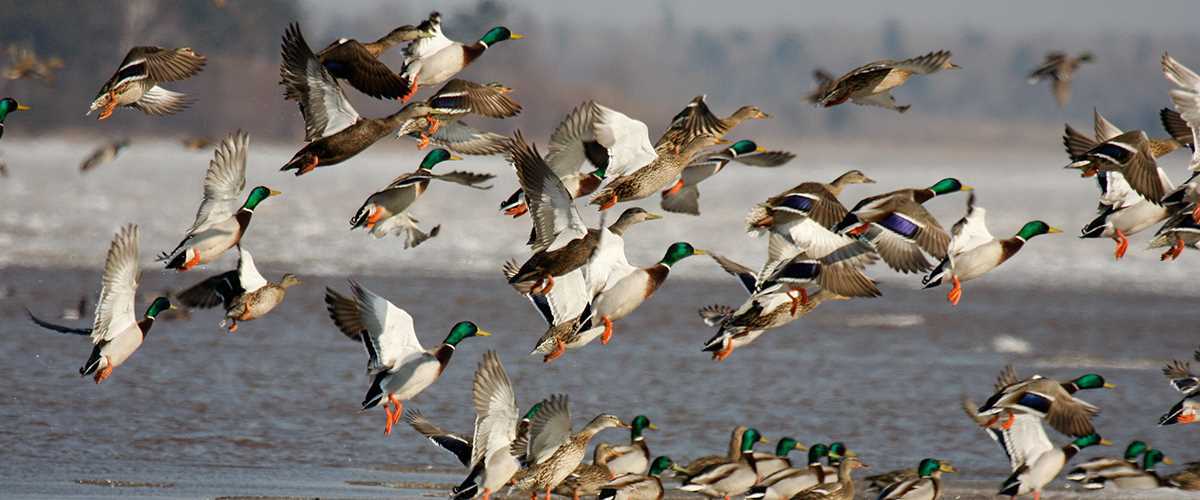Officials will use long-term data to predict spring 2020 waterfowl abundance

For the first time in its 65-year history, the Waterfowl Breeding Population and Habitat Survey has been cancelled by the U.S. Fish and Wildlife Service (USFWS), Canadian Wildlife Service (CWS) and state partners due to COVID-19 restrictions. The USFWS provided the following responses to common questions regarding the cancellation of the survey and the implications for waterfowl hunting and management.
The Service fully expects to allow migratory bird hunting during the 2021–22 hunting season. For species with missing data, the Service will carefully assess expected population abundance and growth rates and allow harvest based on long-term data including harvest, survival and reproduction, and population models.
Cancellation of these surveys will impact population estimates and harvest management decisions for most duck species, some goose species, and some webless gamebirds such as American woodcock, and the mid-continent population of sandhill cranes. The Service, in consultation with the Flyway Councils, will use long-term data from spring/summer monitoring for these species to make regulatory harvest management decisions.
The Service will work cooperatively with the Flyway Council to develop a plan for addressing missing data in regulation decision making for the 2021–22 hunting season.
The agency will also discuss how to develop a plan for making harvest management decisions in cases where spring data is not available with Flyway Council consultants at the Services' Migratory Bird Regulations Committee meeting.
The Service will then provide technical information to Flyway Council technical committees for their review and input leading up to summer Flyway Council meetings. In addition, the agency will use existing harvest strategies where applicable and identify populations where there may be risks associated with making decisions based on incomplete data.
Duck season regulations are based on the status of mallards in the Mississippi, Central, and Pacific Flyways, and on the status of four species (green-winged teal, common eider, wood duck, and ring-necked duck) in the Atlantic Flyway.
Explicit Adaptive Harvest Management strategies already exist and have been adopted by the Service and Flyway Councils for developing those regulations. In addition, other strategies or decision tools have been developed for species of concern, including pintails, scaup, black ducks, canvasbacks, and wood ducks.
For the general duck seasons, the Service will use the long-term data and models to predict 2020 spring abundances of ducks and habitat conditions in place of the spring 2020 data, which cannot be collected. The results from these predictions will be combined with the existing harvest strategies to determine appropriate levels of harvest for the 2021–22 season. This will ensure the sustainability of ducks and provide hunting opportunities for the American public.
The proposed strategy for these species of special concern will be similar to that for the general duck season where explicit Adaptive Harvest Management strategies have been adopted by the Service and Flyway Councils for developing harvest management regulations.
Similar to the general duck seasons, the Service will use long-term data and models to predict 2020 spring abundances of these ducks and habitat conditions in place of the spring 2020 data, which will not be available. Results from the predictions will be used with the existing harvest strategy to determine appropriate levels of harvest for the 2021–22 season. This will ensure the sustainability of ducks and provide hunting opportunities for the American public.
Fortunately, the Service and other conservation partners have long-term monitoring programs for most species of migratory game birds including both population status and harvest information. Those long-term data indicate that most populations are above long-term averages and objective levels identified in management plans.
The Service does have current population data and other information for some species, where decisions are made based on surveys from the previous fall or during the winter. The Service can use that information along with likely habitat conditions and expected harvest pressure under various hunting season scenarios to determine whether hunting seasons will pose any risk to those populations.
Generally, yes, because most populations are healthy and can sustain harvest at the levels set in place previously. However, in some cases changes may be appropriate and the Service will work with Flyway Councils to identify any populations of special concern.
It is too early to speculate what will happen after the spring of 2020. Operations are being reviewed as the pandemic continues, and decisions are evolving as time progresses.
Currently, Canada has cancelled all field operations in areas north of 60 degrees latitude through the end of September, so all monitoring activities in the far north, including arctic goose banding, will not be conducted this summer and fall.
The Service will make a decision on whether banding operations south of 60 degrees latitude and any other monitoring efforts will be conducted this year in the next couple of months.
Ducks Unlimited uses cookies to enhance your browsing experience, optimize site functionality, analyze traffic, and deliver personalized advertising through third parties. By continuing to use this site, you agree to our use of cookies. View Privacy Policy